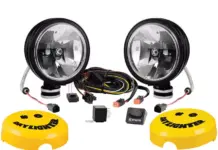“For several years, San Francisco’s hilly and congested streets have doubled as a test track for hundreds of driverless cars operated by Waymo, an autonomous vehicle company owned by the Google parent company Alphabet, and General Motors-owned Cruise.
On Monday, despite the objections of San Francisco officials who worry the cars aren’t especially safe, Waymo’s vehicles began functioning just like paid taxis, minus the driver. For the first time, some people could book rides and pay fares for trips in a Waymo driverless car. Cruise has already been operating a limited paid service around parts of the city.”
Source:
Mickle, T., Lu, Y., & Isaac, M. (2023, August 21). “this experience may feel futuristic”: Three rides in Waymo Robot taxis. The New York Times. https://www.nytimes.com/2023/08/21/technology/waymo-driverless-cars-san-francisco.html
Analysis:
Driverless cars seem to be less of a thing of the future and more of a thing of the present. Tests in San Francisco seem to indicate this. Early tests proved hazardous to pedestrians and drivers alike, but recent adjustments seem to have remedied the problems. My question is have we taken into account problems that might occur when the car starts to wear down. How dependable is it in a situation when reckless drivers put the car in danger. The road is often unpredictable. How can we make technology, that has a limited lifespan, reliable in the long run, especially when lives are at stake. Planes can already takeoff, fly, and land themselves. They still have 2 pilots in case something goes wrong and needs human intervention. More people die in car accidents than plane crashes. Are we pushing technology too far? Does it already have too much control over our lives? Does it not have enough control? Its our responsibilities as designers to make that discern for everything we design.




